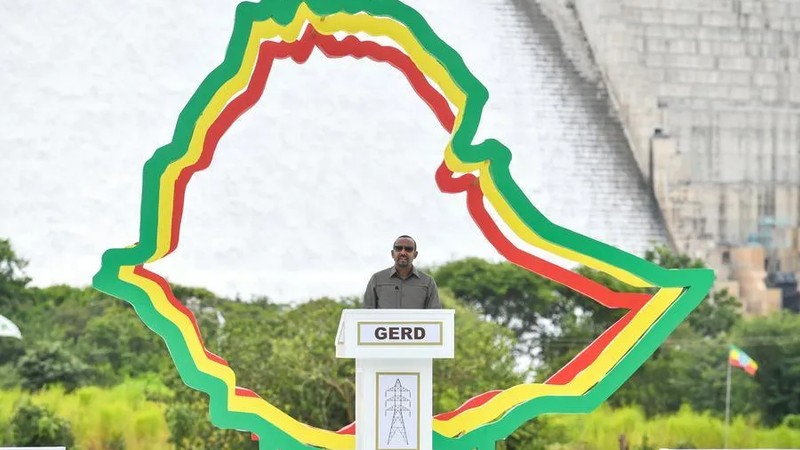Ethiopia is intentionally using mega-projects, such as the Grand Ethiopian Renaissance Dam (GERD), and forthcoming plans for a nuclear power plant, a vast Bishoftu airport, and a major Dangote-backed fertiliser complex, as a deliberate strategy to translate mere claims of national sovereignty into tangible geopolitical and economic influence. The GERD’s significance extends far beyond its engineering success; its completion was a political action fundamentally shifting regional power dynamics. By harnessing its hydrological resources, Ethiopia secured predictable electricity, industrial potential, and diplomatic leverage. This foundational logic, converting national projects into instruments of geopolitical agency is the consistent theme in both Prime Minister Abiy Ahmed’s pronouncements and the analysis of relevant scholars.
Economic self-reliance and strategic interests
For Ethiopia, a landlocked nation of over 120 million people often burdened by external economic constraints, a core defensive strategy is to build domestic capacity across critical sectors. Investing in power generation, fertiliser production, aviation, and energy processing directly mitigates vulnerabilities like foreign currency shortages, reliance on imports, and exposure to external leverage.
The planned $2.5 billion Dangote fertiliser facility in Gode is a prime example of this strategy. Structured as a majority private equity investment and powered by local gas, the plant will produce millions of tonnes of urea domestically. This domestic production is key to relieving a long-standing constraint on agricultural productivity and significantly reducing the substantial budgetary expense currently spent on imported fertiliser. Consequently, this initiative has direct, positive ramifications for national food security and frees up greater fiscal resources for the state.
The nuclear question
Careful analysis of the nuclear power proposal is essential. While nuclear energy offers potential for baseload electricity and technological advancements, its success is dependent on a prolonged period of developing regulatory maturity, establishing comprehensive safety frameworks and non-proliferation safeguards, and cultivating highly skilled human capital. Given Ethiopia’s current regulatory capacity and the intricacies of nuclear diplomacy, successful implementation will necessitate robust international oversight and a phased, technically supervised approach. Strategic risks would be amplified, not diminished, by premature timelines or lack of transparency in procurement. Although recent progress, like formalising an “action plan” with Russian partners, indicates movement, the associated geopolitical implications and fiscal commitments are substantial.
Regional Integration through Infrastructure
Ethiopia’s development approach shows genuine potential through strategically coordinated complementarities: utilizing hydropower to power industrial operations, leveraging local gas and other inputs for fertiliser and petrochemical projects, and establishing an aviation hub to connect production with regional markets. Executed cohesively, this strategy has the capacity to transform Ethiopia from a commodity exporter into a regional industrial center, generating beneficial outcomes for employment and export diversification. The reported involvement of the African Development Bank in funding the Bishoftu airport highlights how multilateral financing can bridge the divide between ambitious national visions and practical, financeable project designs, particularly when conditionalities prioritise social safeguards and competitive procurement processes.
Governance as the deciding factor
Effective execution, not mere proclamation, is the true measure of a mega-project’s success. To prevent common pitfalls such as escalating debt, localized disruption, and broken promises, Ethiopia’s ambitious large-scale investments require robust foundational frameworks. Specifically, these frameworks must include: transparent procurement processes, credible management of environmental and social risks, strong local content requirements, and a structured, phased approach to workforce development. Consequently, Ethiopia’s leadership must complement its vision with substantial institutional reinforcement, covering all relevant bodies, from procurement agencies to nuclear regulators and independent fiscal oversight. Crucially, allowing for independent audits and encouraging active participation from civil society is also indispensable.
Sovereignty or liability?
Ethiopia’s strategy of leveraging infrastructure for sovereignty is inherently promising and could lead to profound change, provided effective management is in place. The true obstacle is not the scale of these necessary projects, but ensuring the political will is consistently supported by essential factors: administrative efficiency, fiscal prudence, and genuine accountability. While well-executed, ambitious projects can pave the way for sovereign development, poor governance threatens to transform these national symbols into considerable, lasting financial burdens. The pivotal choice for Ethiopia, politically and technocratically, is between securing a sovereign future and incurring long-term debt.
Written By:
*Dr Iqbal Survé
Past chairman of the BRICS Business Council and co-chairman of the BRICS Media Forum and the BRNN
*Sesona Mdlokovana
Associate at BRICS+ Consulting Group
African Specialist
** MORE ARTICLES ON OUR WEBSITE https://bricscg.com/
** Follow https://x.com/brics_daily on X/Twitter for daily BRICS+ updates
